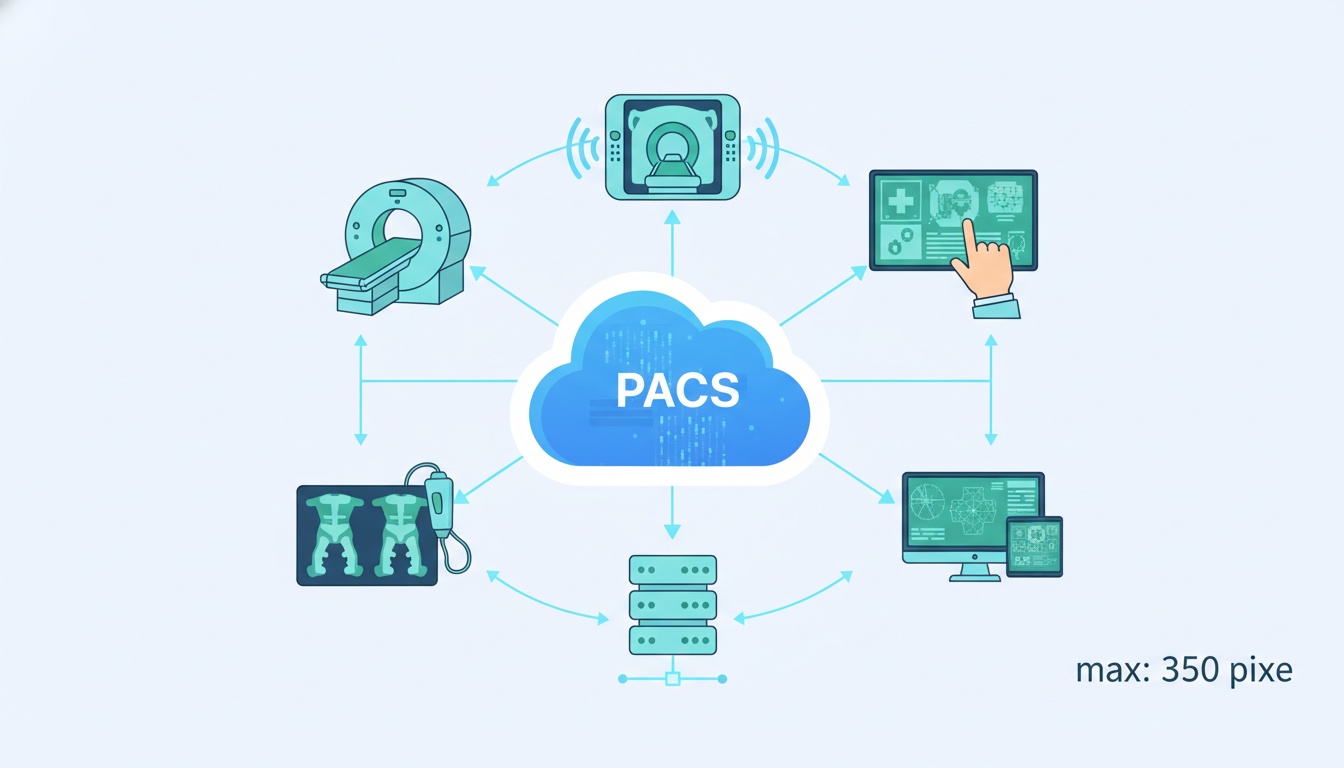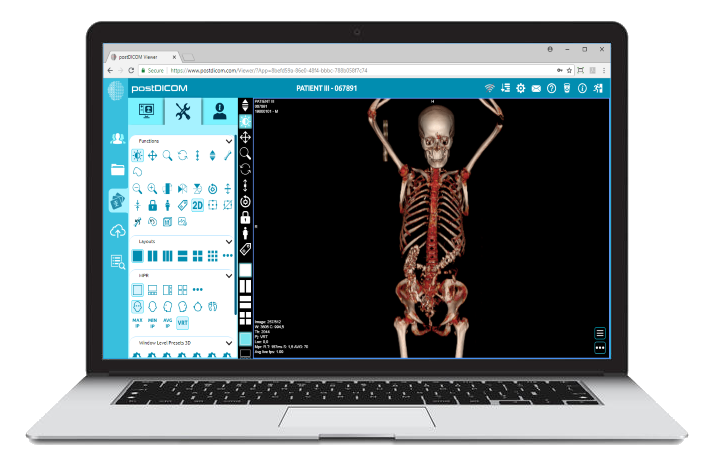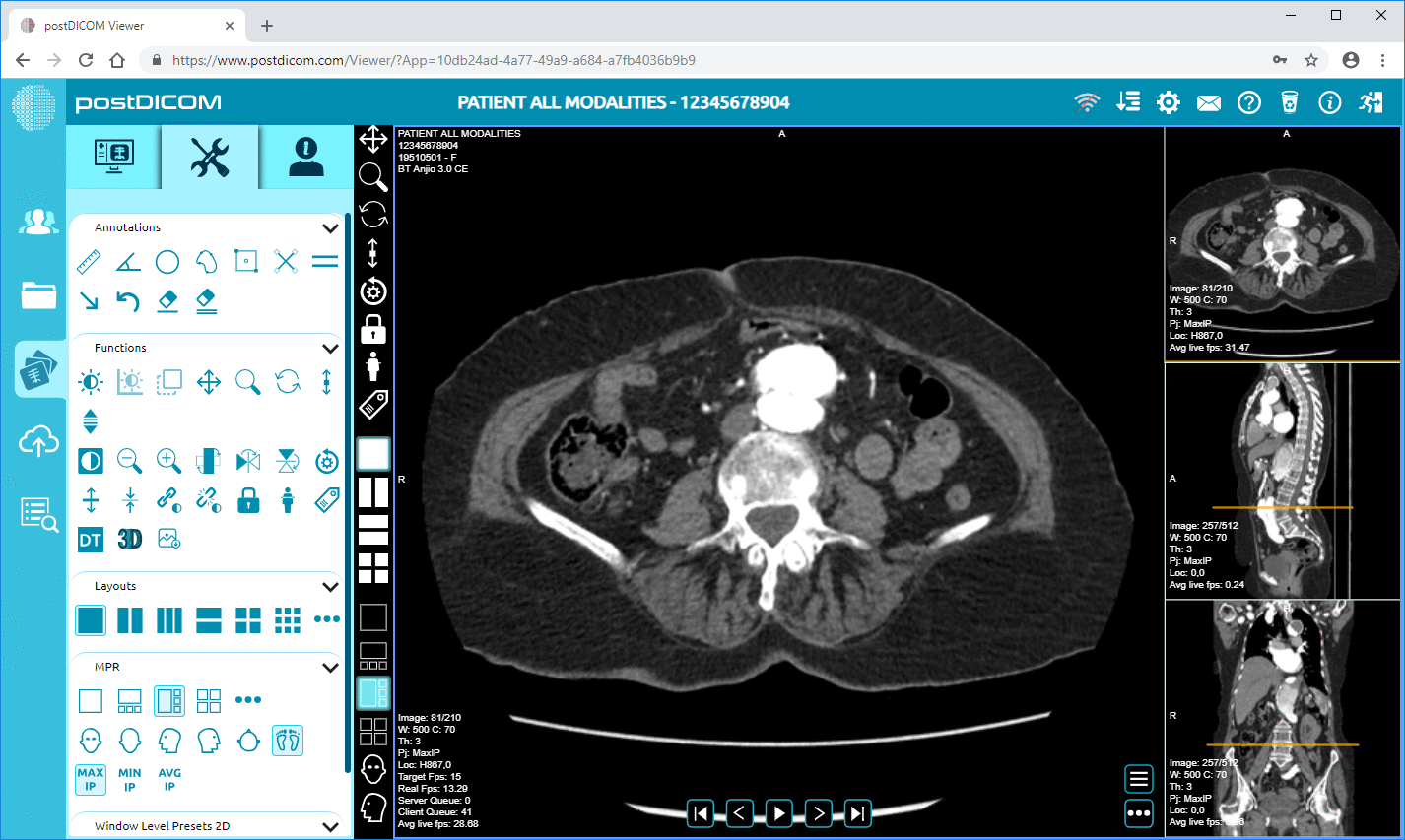
Welcome to a deeper understanding of PACS—the Picture Archiving and Communication System that has reshaped the terrain of medical imaging.
In an era where rapid access to medical records is not just preferred but essential, PACS stands as a cornerstone in healthcare technology, offering unmatched efficiency and integration.
This system allows healthcare professionals to store, retrieve, manage, and share imaging data from various sources, enabling better, faster, and more collaborative care.
As we explore the nuances of PACS, we will uncover how this technology supports medical staff and significantly enhances patient outcomes by providing timely and accurate diagnoses.
Join us as we delve into PACS, a technology that continues to revolutionize medical imaging access and utilization in healthcare facilities worldwide.
Picture Archiving and Communication System (PACS) is a digital technology used extensively in healthcare to store, retrieve, manage, and share medical images. Developed in the early 1980s, PACS was designed to replace traditional film-based imaging, offering a digital solution that enhances the accessibility and management of medical images.
The inception of PACS marked a significant transition in medical imaging. Moving from physical films to a fully digital workflow revolutionized how medical imaging data was handled across healthcare facilities. This shift improved diagnostic capabilities and significantly reduced the storage space required for medical images, setting a new standard in the medical field.
PACS comprises several key components, each serving a crucial role in the management and dissemination of medical imaging data:
1. Imaging Modalities: These are the various types of equipment used to capture medical images, such as MRI machines, CT scanners, ultrasound devices, and X-ray machines. Each modality sends the images it captures directly to the PACS in a digital format, typically conforming to the DICOM (Digital Imaging and Communications in Medicine) standard, which ensures compatibility across different devices and systems.
2. Viewing Workstations: These specialized computers have high-resolution displays and sophisticated software designed to view, manipulate, and analyze medical images. Radiologists and other medical professionals use these workstations to thoroughly examine digital images, make measurements, and prepare diagnostic reports.
3. Archive Servers: These powerful storage systems are the backbone of PACS, designed to securely handle large volumes of digital imaging data. Archive servers store current and historical images and ensure they are backed up and can be retrieved quickly. This data is often stored redundantly across multiple physical locations to safeguard against data loss due to hardware failure or other issues.
4. Communication Networks: Robust and secure networks are essential for the seamless operation of PACS. These networks connect the imaging modalities, viewing workstations, and archive servers, facilitating the swift and secure transmission of imaging data across the healthcare facility. Advanced encryption and security protocols protect sensitive patient data during transmission and storage, ensuring compliance with healthcare regulations like HIPAA.
Adopting Picture Archiving and Communication Systems (PACS) in healthcare has revolutionized medical imaging by addressing core efficiency, cost, and collaboration issues. This transformation is evident in various healthcare operations, impacting patient care and facility operations.
PACS dramatically enhances the efficiency of healthcare operations by reducing the time required to retrieve and access medical images.
Unlike traditional film-based systems, where physical retrieval, handling, and loading of film images are time-consuming, PACS enables instant access to digital images from multiple locations simultaneously. This capability is crucial in emergency settings where quick image retrieval can be life-saving.
Moreover, PACS facilitates remote access to images, allowing specialists to review and diagnose from anywhere. This speeds up the diagnostic process and extends specialized medical consultations to remote areas, improving the reach and quality of medical care.
Transitioning from a film-based system to a digital PACS offers significant economic benefits. The traditional use of physical films involves costs for film materials, storage space, and management labor. These costs accumulate over time, especially in high-volume imaging environments. PACS eliminates the need for film, reducing material costs and freeing up valuable real estate previously used for film storage.
Furthermore, digital storage solutions have become more affordable, even as they offer superior scalability and reliability compared to physical storage, enhancing the long-term cost-effectiveness of medical imaging operations.
One of the standout advantages of PACS is its ability to improve interdisciplinary collaboration across medical teams. With digital images readily accessible through PACS, specialists, such as radiologists, surgeons, and other physicians, can simultaneously view and discuss imaging results, irrespective of their physical location.
This shared access helps create a more integrated approach to patient care, where multiple expert inputs enhance decision-making. Such collaboration is particularly beneficial in complex cases where multifaceted medical expertise is crucial for accurate diagnosis and treatment planning.
The seamless integration of PACS (Picture Archiving and Communication Systems) with other healthcare management systems, such as Radiology Information Systems (RIS) and Electronic Health Records (EHR), is crucial for enhancing clinical workflows and ensuring data coherence across medical practices.
Radiology Information Systems (RIS) are essential for managing radiological data and associated workflows. When PACS integrates with RIS, it ensures that all imaging data correlates directly with the patient's administrative data and radiological reports. This linkage automates scheduling, tracking radiology orders, and viewing detailed radiology reports alongside corresponding images in real-time. This integration enhances workflow efficiency by minimizing manual data entry and reducing the potential for errors, thus speeding up the diagnosis process.
On the other hand, Electronic Health Records (EHR) provide a comprehensive record of a patient's overall health history. Integrating PACS with EHR systems enables physicians and radiologists to access complete patient records, including diagnostic images, from a single platform. This integration supports better-informed clinical decisions as healthcare providers have a holistic view of the patient's health data. For instance, a doctor can easily switch between a patient's lab results and MRI images, facilitating a more accurate assessment of the patient's condition.
The integration of PACS with RIS and EHR significantly impacts patient care by improving the accuracy of diagnostics and the efficiency of treatments.
With seamless access to a patient's historical and current medical data, healthcare providers can detect subtle changes in the patient's condition, leading to early diagnosis and timely intervention. This capability is particularly beneficial in chronic conditions where continual monitoring is crucial.
Moreover, this integration supports multidisciplinary team collaboration. For example, during tumor boards, specialists from various fields can access and review the patient's images and medical records simultaneously, enabling a collaborative approach to deciding on the best treatment plan.
This collaborative environment, supported by integrated systems, ensures that patient care is comprehensive and cohesive, leading to better health outcomes.
Integrating Picture Archiving and Communication Systems (PACS) in healthcare facilities necessitates stringent security measures and strict adherence to regulatory compliance to protect sensitive medical data.
As PACS handles vast amounts of personal health information, ensuring the security and privacy of this data is paramount for both ethical and legal reasons.
Security within PACS is multifaceted, involving several layers of protection to guard against unauthorized access and potential breaches:
• Encryption: Data at rest and in transit is encrypted using advanced encryption standards. This means that even if data interception occurs, the information remains secure and unreadable to unauthorized users.
• Access Controls: Access to the PACS is strictly controlled through robust authentication mechanisms. These include strong passwords, biometrics, and role-based access controls that ensure only authorized personnel can access sensitive imaging data.
• Audit Trails: PACS are equipped with detailed audit trails that log all access and actions taken within the system. These logs are critical for monitoring system activity and can be vital in detecting and responding to security incidents.
• Network Security: The networks on which PACS operate are secured with firewalls, intrusion detection systems, and regular security assessments to prevent and mitigate potential cyber threats.
PACS must comply with various health information privacy laws to protect patient data effectively:
• Hipaa Compliance: In the United States, PACS must comply with the Health Insurance Portability and Accountability Act (HIPAA), which sets the standard for protecting sensitive patient data. PACS systems are designed to meet HIPAA requirements by ensuring patient information's confidentiality, integrity, and availability.
• Data Integrity And Availability: PACS ensures data integrity by maintaining accurate and complete images not altered inappropriately. Data backups and disaster recovery protocols are integral to PACS, ensuring data availability even during hardware failures or natural disasters.
PACS's stringent security measures and compliance protocols protect patient data and bolster patient confidence in the healthcare system. Patients are more likely to trust and engage with healthcare providers when they are confident that their medical information is handled securely and with respect for their privacy. This trust is crucial for effective patient care and the overall functioning of healthcare systems.
 - Created by PostDICOM.jpg)
As we delve into the future of Picture Archiving and Communication Systems (PACS), two pivotal technologies stand at the forefront of transforming how medical imaging data is managed and utilized: Artificial Intelligence (AI) and telemedicine. Both promise to amplify PACS's capabilities, making it an even more integral part of modern healthcare.
The integration of AI and machine learning into PACS is set to revolutionize medical imaging analysis and diagnosis. AI algorithms are increasingly capable of analyzing complex imaging data, identifying patterns that may not be immediately apparent to human eyes.
This capability could enhance diagnostic accuracy by providing radiologists with advanced tools for detecting anomalies such as tumors, fractures, or signs of neurological disorders at earlier stages.
Moreover, machine learning models can learn from vast datasets of historical imaging data available in PACS, improving their diagnostic predictions over time. This learning ability could lead to more personalized patient care strategies, where AI-powered PACS provide insights tailored to individual patient histories, enhancing the speed and accuracy of medical responses.
PACS plays a crucial role in expanding telemedicine, particularly in remote diagnostics. By facilitating access to medical imaging data across geographic barriers, PACS enables specialists in urban centers to provide expert diagnostic services to patients in remote or underserved regions.
This feature extends the reach of high-quality medical care and reduces the need for patients to travel long distances for expert opinions.
The ongoing improvements in network technologies and cloud-based PACS solutions further enhance this aspect.
With faster, more secure data transmissions, remote consultations and collaborations can occur in near real-time, making it feasible for multidisciplinary teams to discuss and determine treatment plans without delay, irrespective of their physical locations.
As we look to the future, the landscape of PACS is expected to evolve continuously with advancements in AI and the growing demands of telemedicine.
These technologies will address current challenges and open new avenues for enhancing patient care through improved diagnostic tools and broader access to specialist expertise.
As we've explored, PACS's impact on the healthcare industry is profound. It is reshaping how medical imaging data is managed and utilized across various sectors.
The future of PACS promises even more significant enhancements, with advancements in artificial intelligence and the expansion of telemedicine capabilities setting the stage for unprecedented improvements in diagnostic accuracy and patient care accessibility.
Selecting a PACS provider that aligns with the future vision of healthcare is crucial. PostDICOM stands at the forefront of this innovation, offering cloud-based PACS solutions that integrate the latest AI technology and support the expansive needs of telemedicine.
With PostDICOM, healthcare facilities can ensure they are equipped with a system that meets the current medical imaging demands and is scalable for future advancements.
Choosing PostDICOM means investing in a future where medical imaging is more accurate, accessible, and efficient, ensuring that your facility remains at the cutting edge of healthcare technology.
Embrace the future with PostDICOM—where advanced technology meets clinical excellence.


|
Cloud PACS and Online DICOM ViewerUpload DICOM images and clinical documents to PostDICOM servers. Store, view, collaborate, and share your medical imaging files. |